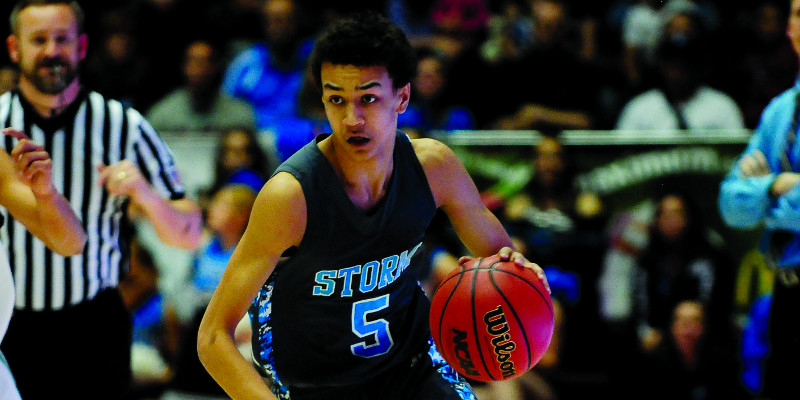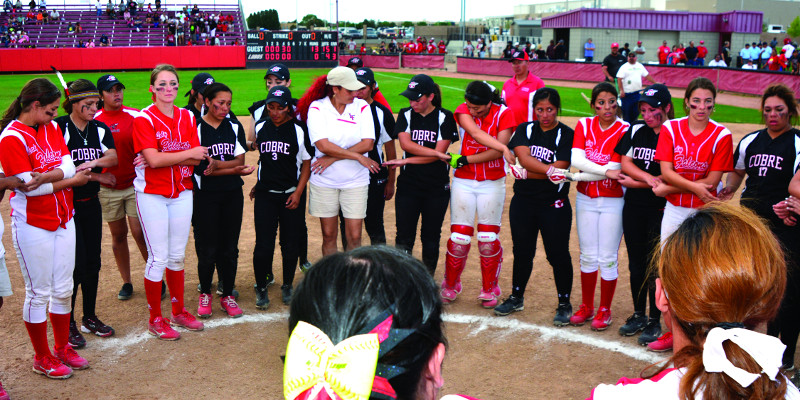

The Case for High School Activities
INTRODUCTION
The National Federation of State High School Associations (NFHS) and its member state associations champion interscholastic sports and performing arts activities because they promote citizenship and sportsmanship in the 11 million students who participate nationwide. Activity programs instill a sense of pride in school and community, teach lifelong lessons and skills of teamwork and self-discipline and facilitate the physical and emotional development of the nation’s youth.
There is no better time than now to assert "The Case for High School Activities." Education and community leaders across America need the facts contained in this material documenting the benefits of participation in interscholastic sports, music, theatre, debate, and other activities, to provide support needed for these programs. These activities provide important developmental experiences that enrich a student's high school experience and entire life, and these programs must be protected and sustained.
COST BENEFIT
At a cost of only one to three percent (or less in many cases) of an overall school's budget, high school activity programs are one of today’s best bargains. It is in these vital programs – sports, music, speech, theatre, debate – where young people learn lifelong lessons that complement the academic lessons taught in the classroom. From a cost standpoint, activity programs are an exceptional bargain when matched against the overall school district’s education budget.
Examinations of various school districts’ budget information across the country reveal that activity programs make up very small percentages of school budgets. In the 2014-15 school year, the city of Chicago’s Public School Board of Education’s budget was $4.93 billion. The activity programs portion was $17.6 million. In the Los Angeles Unified school district, activity programs received $6.33 million of the overall $7.27 billion budget for 2014-15. Finally, in the Miami – Dade, Florida school district, its Board of Education had a 2014-15 overall budget of $3.7 billion dollars, while setting aside $17.2 million for activity programs. In all of these examples, the budget for school activity programs is less than one percent of the overall district’s budget. Considering the benefits, which are outlined below, at such small proportions of overall school district budgets, school activity programs are one of the most effective investments being made in secondary school education programs today.
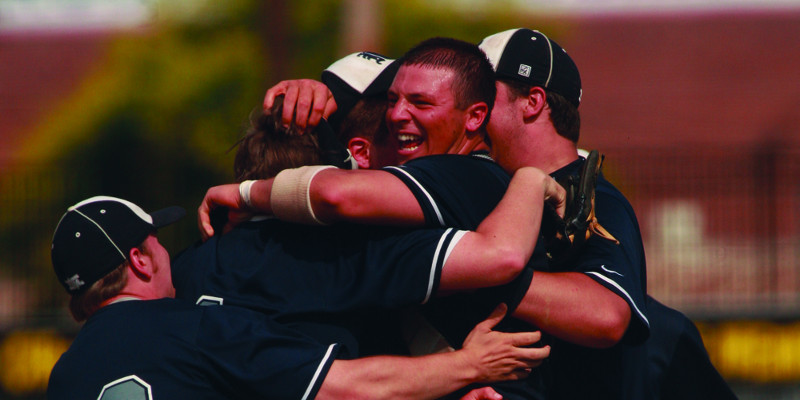
The NFHS supports co-curricular endeavors through many avenues, including:
- Rules-writing Process – The NFHS produces more than eight million copies of publications and support materials annually for 14 rules books covering 16 sports. The NFHS publishes case books, officials’ manuals, handbooks, and simplified and illustrated books in many sports.
- The NFHS Learning Center – The NFHS Fundamentals of Coaching Course provides a unique student-centered curriculum for interscholastic coaches that assists coaches in creating a healthy and age-appropriate sport experience. The course can be taken either online or in a face-to-face blended delivery option. With over than one million courses viewed and taken, this tool enhances the education for the adults who have committed to the betterment of their young people. More information can be accessed by going to www.nfhslearn.com.
- National High School Activities Month – The nation's high schools are encouraged to promote the values inherent in high school athletics, speech, music, theatre, debate and spirit squads during this celebration in the month of October.
- Public Service Announcements – Various sportsmanship messages are created and distributed in electronic and radio formats, as well as healthy lifestyle messages that tackle difficult but current topics such as steroid usage and hazing education.
- High School Activities: A Community Investment in America – This presentation is an NFHS educational product. It documents the value of high school athletic and fine arts activities through an excellent PowerPoint presentation with videos on a CD-ROM. You can order this CD-ROM by calling NFHS customer service at 800-776-3462.
- SPORTSMANSHIP. IT’S UP TO YOU.™ TOOLKIT – This initiative is designed to improve sportsmanship in schools and the community. Sportsmanship is an issue that affects everyone. The "Sportsmanship, It's Up To You" campaign is based on respect and involves personal responsibility. It starts with a mindset and ends with behavioral choices. In this kit you will find the necessary information and media resources to implement a successful sportsmanship awareness and improvement program in your school. The campaign comes on 2 DVD's. The resource DVD contains the implementation guide (pdf), overview video, motivational video to share with your school and community, various customizable posters, live-read scripts for school announcements and radio spots, Student pledge cards, a logo/photo library, and guidelines. The presentation DVD is for a large audience. The disc houses a full-screen, full resolution videos. Videos included are the campaign overview, motivational video, and 3 broadcast PSA's. You can order this toolkit by calling NFHS Customer Service at 800-776-3462.
Benefits of Co-curricular or Education-based Activities
- Activities Support the Academic Mission of Schools. They are not a diversion, but rather an extension of a good educational program. Students who participate in activity programs tend to have higher grade-point averages, better attendance records, lower dropout rates and fewer discipline problems than students generally.
- Activities are Inherently Educational. Activity programs provide valuable lessons and skills for practical situations – like teamwork, fair play, and hard work. Through participation in activity programs, students learn self-discipline, build self-confidence and develop skills to handle competitive situations. These are qualities students need if they are to become responsible adults, productive citizens and skilled professionals.
- Activities Promote Health and Well-being. Mental and physical health are improved by through activities. Self-concept, self-image, physical activity, and weight management are a few of these health benefits realized through activity participation.
- Activities Foster Success in Later Life. Participation in high school activities is often a predictor of later success – in college, a career and becoming a contributing healthy member of society.
Following are some of these benefits identified more specifically and documented. These benefits are described in several categories that are listed immediately below. This version of the Case for High School Activities compared to past versions presents additional and more recent study results and includes additional categories of benefits. Several of the studies below have findings that fit into more than one category. In most cases the study was listed in the category that fit best for most of its findings, and in some cases the other findings for the study (that may have fit better in another category) were also mentioned alongside the major findings. Only a couple of studies were listed in two categories because the study had major findings in both categories. While many of the studies below refer to “extracurricular activities,” the NFHS prefers the use of the terms “education-based” or “co-curricular” activities to indicate that activities support the academic mission of schools, are inherently educational, and are a significant part of the school or education system.
- BETTER EDUCATIONAL OUTCOMES
- ENHANCED SCHOOL ENGAGEMENT AND SENSE OF BELONGING
- POSITIVE YOUTH DEVELOPMENT/LIFE SKILLS
- HEALTHIER BEHAVIORS
- POST HIGH SCHOOL POSITIVE RESULTS
- DEVELOPING BETTER CITIZENS
- SCHOOL AND COMMUNITY BENEFITS
- FINAL THOUGHTS ABOUT THE CASE
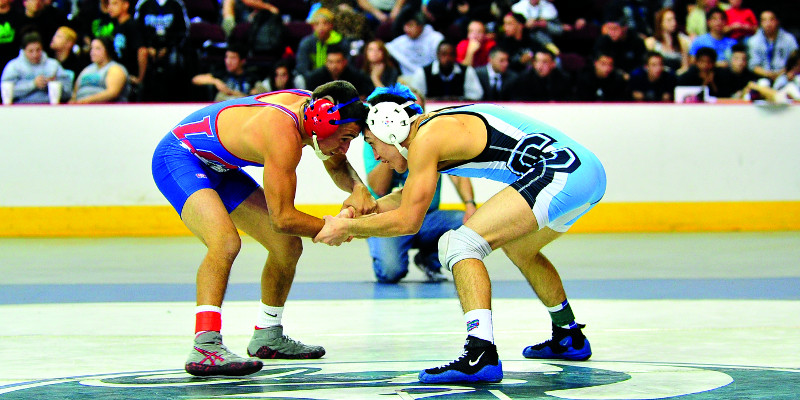
Students who compete in high school activity programs have better educational outcomes, including higher grades, higher achievement test scores, and higher educational expectations beyond high school.
- Students in school-sponsored activities had higher math achievement test scores and expectations for attending college according to a report that examined data from two national longitudinal education cohort studies (from the National Center for Education Statistics). The results also showed that the relationship between these outcomes and extracurricular activities held for students in the 1990s (Generation X) and the early 2000s (Millennial Generation). The author comments that these outcomes may be because school activities involvement increases school engagement in the schools’ academic culture and also that students in the 2000s were participating more in these “academically beneficial” school-sponsored activities. (Dumais, 2009).
- A study of nearly 140,000 Kansas high school students, examining data from the Kansas High School Athletic Association and the Kansas State Department of Education, revealed that “athletes earned higher grades, graduated at a higher rate, dropped out of school less frequently, and scored higher on state assessments than did non-athletes.” Student-athletes of color contributed to these overall results having much higher grade point averages much higher graduation rates, and much lower dropout rates than non-athlete students of color. This led authors to say that although pay-to-play “may seem like a reasonable alternative to eliminating sport programs altogether, it discriminates against students who do not have the financial means to pay for membership on a high school sports team.” (Lumpkin & Favor, 2012). Thus, eliminating sports programs, and likely other extracurricular activities, or implementing pay-to-play (or increasing the cost) is likely to have a more negative impact on students who come from families that are poorer, and generally students of color are over-represented among poorer families.
- When looking at the relationship of physical activity and sports team participation with grade point average (GPA), sports team participation was independently associated with a higher GPA for high school girls and boys. The effect of sports team participation had an independent effect on GPA beyond physical activity. This suggests that other factors involved in sports team participation beyond physical activity play a role in academic outcomes. Possible explanations from the authors included: sports participation promotes identification with school and school related values, such as doing well academically; pro-educational social norms among teammates and coaches; and academic requirements for participation. They also note, “For adolescent students, in particular, sports team participation may be the major route by which they are physically active, and multiple studies suggest that participation on sports teams is also associated with better academic outcomes.” (Fox et al., 2010).
- An earlier study looking at physical activity and academic performance in younger students found that those who participated in vigorous physical activity did approximately 10% better in math, science, English, and social studies than students who did no or little vigorous activities. Yet, the study noted that many of the students reporting higher levels of vigorous activities were involved in organized sports, like soccer, football, or basketball. (Coe et al., 2006).
- Participation in school-sponsored athletics “is associated with a 2 percent increase in math and science test scores”, school-sponsored “club participation is associated with a 1 percent increase in math test scores,” and “involvement in either in sports or clubs is associated with a 5 percent increase in Bachelor’s degree attainment expectations,” according to an investigation of National Education Longitudinal Study (NELS) data. The author notes that such outcomes, high school test scores and degree attainment expectations, are “strongly related to educational attainment and future wages,” and that “society ought to have a better understanding of the benefits these activities [school-sponsored clubs and sports] afford.” (Lipscomb, 2007).
- Other research analyzing NELS data shows that high school participation in extracurricular school activities (ESAs) are more strongly related to positive school outcomes than out-of-school extracurricular activities. These school outcomes were higher grades in 12th grade and higher rates of college attendance two years after high school, even when controlling for earlier grades. The study did find “diminishing returns for extremely high levels of ESA.” The authors also noted that extracurricular school activities “benefited socioeconomically disadvantaged students as much or more than advantaged students.” (Marsh & Kleitman, 2002).
- A Minnesota State High School League survey of 300 Minnesota high schools showed that the average GPA of a student-athlete was 2.84, compared with 2.68 for the non-participating student, and that student-athletes missed an average of only 7.4 days of school each year, compared with 8.8 for the non-participating student. (Born, 2007). This supports previous results from a study done in collaboration with the North Carolina High School Athletic Association that found significant differences between North Carolina high school students who were athletes and those who were not athletes in GPA (2.98 for athletes vs. 2.17 for non-athletes), missed days of school per school year (6.3 for athletes vs. 11.9 for non-athletes), disciple referrals (33.3% of athletes vs. 41.8% of non-athletes), dropout rate (0.6% for athletes vs. 10.32% for non-athletes), and graduation rate (99.4% for athletes vs. 93.5% for non-athletes). (Overton, 2001).
- A report for the College Entrance Examination Board on the study of the relationship of extracurricular activity involvement in high school and SAT (Scholastic Aptitude Test) scores concluded that “participation in extracurricular activities provides all students – including students from disadvantaged backgrounds, minorities and those with less-than-distinguished academic achievements in high school – a measurable and meaningful gain in their college admissions test scores. The important reasoning abilities measured by tests like the SAT, evidently, are indeed developed both in and out of the classroom.” This conclusion was reached by analyzing the SAT verbal and mathematics scores of more than 480,000 high school students after controlling for a number of socioeconomic background and academic achievement factors. Also the impact of extracurricular activity participation was larger than the family socioeconomic factors and academic achievement levels used in this study. (Everson & Millsap, 2005).
- An examination of 2001 SAT scores revealed that music students scored about 11 percent higher than non-music students. Students with coursework/experience in music performance and music appreciation scored higher on the SAT than students with no arts participation, about 60 points higher in verbal area of the SAT and over 40 points higher in math. (CEEB, 2001).
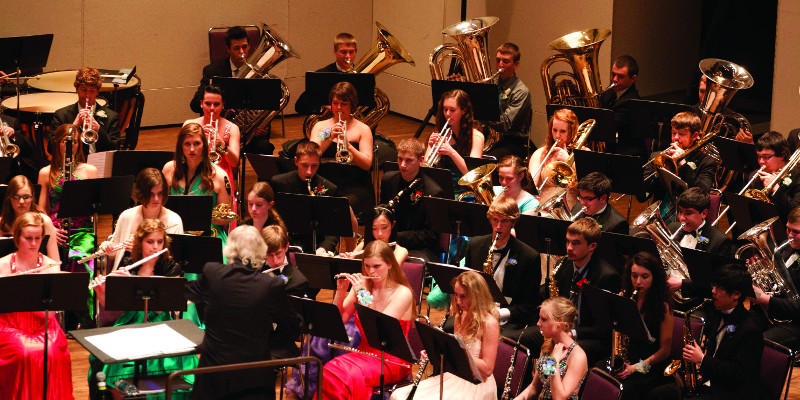
ENHANCED SCHOOL ENGAGEMENT AND SENSE OF BELONGING
Participation in high school activities is a valuable part of the overall high school experience, enhancing students’ school engagement and sense of belonging.
- Examination of data from the National Longitudinal Study of Adolescent Health showed strong evidence that school extracurricular activities were positively associated with adolescents’ friendships, both supporting existing friendships and developing new ones. Friendship ties were more likely to exist among activity coparticipants while controlling for other friendship processes. The authors noted that extracurricular activities provide settings “within schools that are uniquely poised to promote friendships, as they are typically voluntary, safe settings that allow adolescents space to interact and engage with their friends.” (Schaefer et al., 2011).
- A study looking at social adjustment in making the transition from middle school (8th grade) to high school (9th grade) found involvement in sports helped students with friendships during the transition. The authors wrote, “Continuous involvement in sports and initiation of academic activities was associated with having more friendships.” (Bohnert et al., 2013).
- School arts participation and engagement are associated with enhanced academic motivation and engagement measures as well as [non-academic] measures of well-being, including a sense of meaning and purpose according to a longitudinal study of students in 15 Australian schools. It also showed that in-school arts participation and engagement measures were more strongly correlated with academic motivation and engagement outcomes and some measures of well-being than non-school related participation measures. (Martin et al., 2013).
- Involvement in a moderate number of activity domains, among academic/leadership groups, arts activities, clubs, and sports, promotes a greater sense of belonging at school, increased academic engagement, and higher academic performance as measured by grade point average according to a study of urban, ethnically diverse students (40.7% Latino; 16.8% African-American, 12.7% Asian-American, 11.2% Caucasian, and 18.5% other ethnicity or two or more ethnic groups). The study authors suggest that it is necessary for schools “retain ample extracurricular opportunities in order to foster adolescents’ sense of belonging at school and higher academic performance.” They conclude that, “it is essential that schools offer a number of extracurricular activities that capture the diverse interests of the entire student body. Schools can maximize the impact of these activities by encouraging disconnected, low achieving students to join a couple of activities. At a time when school budgets face reductions, this type of research argues for the importance of maintaining a breadth of extracurricular opportunities for students attending urban high schools.” (Knifsend & Graham, 2012).
- Contributors to Organized Activities as Contexts of Development: Extracurricular Activities, After-School and Community Programs, noted that making diverse clubs and activities available to a wide range of students is important. The opportunity to embed one’s identity in multiple extracurricular contexts and to experience multiple competencies facilitates attachment to school and adjustment. Activity participation is also linked to affiliation with peers who are academically focused. Adolescents can benefit from this synergistic system when they have opportunities to participate in diverse activities. (Barber et al., 2005).
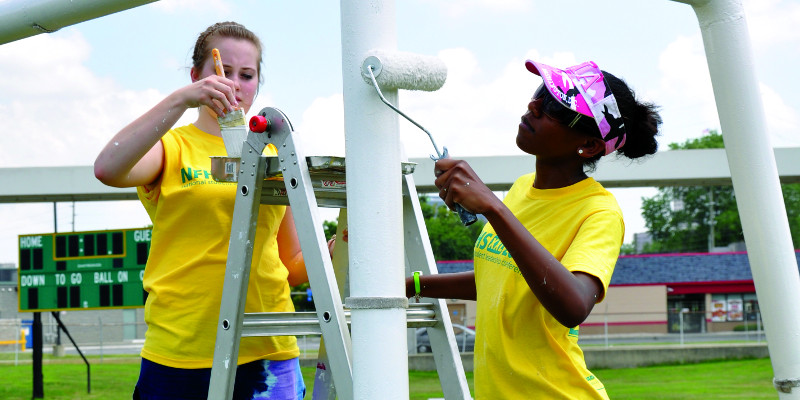

POSITIVE YOUTH DEVELOPMENT/LIFE SKILLS
Co-curricular activity programs promote positive youth development and provide opportunities for learning a number of life skills and values not typically taught in classroom education.
- In a study looking at learning life skills through high school sports, a very diverse group of students participating in high school soccer reported learning skills related to initiative, respect, and teamwork/leadership, despite the authors noting they “did not find evidence that the student-athletes were directly taught about the life skills that were reported.” (Holt et al., 2008).
- A study of life skills developed through football by award-winning high school coaches found that these coaches saw that the process of participation and striving to win taught life skills such as discipline, work ethic, and emotional control. In addition, “these coaches did not view the coaching of life skills as separate from their general coaching strategies for performance enhancement and while highly motivated to win, personal development of their players was a top priority.” (Gould et al., 2007).
- A study of model high school coaches and their athletes found that these coaches taught life skills, their student athletes learned the skills and were able transfer them to other areas of their lives. The study found that these coaches “had specific strategies to coach life skills”, which in addition to modeling behavior included “peer evaluations, taking advantage of teachable moments, and volunteer work,” as well as teaching “student-athletes how to transfer life skills.” (Camiré et al., 2012).
- Extracurricular activities stand out from other aspects of adolescents’ lives at school because they provide opportunities to “develop initiative and allow youth to learn emotional competencies and develop new social skills.” These activities allow “youth to form new connections with peers and acquire social capital.” The authors of this work further stated that activity programs are one of the few contexts, outside of the classroom, where adolescents regularly come in contact with adults to whom they are not related. (Darling et al., 2005).
- In a study commissioned by the Alberta Schools’ Athletic Association, corporate and political leaders surveyed in Alberta cited the following benefits or life skills associated with their involvement in high school athletics: teamwork, discipline, goal-setting, leadership, independence, self-confidence, stress relief, character development and personal growth, fair play, and acceptance of others. (Berrett, 2006).
- A survey study of Life Skill Development in Ontario High School Sport concluded that parents, coaches, and student-athletes all perceive high school sport as positive and is a context where life skills are developed, that student-athletes score higher on most developmental assets than students who are not in high school sports, and that student-athletes appear to be more engaged and enjoy school more as a result of participating in high school sport. (Williamson et al., 2013).
- A study of students drawn from 26 selected Western Australia high schools found that “in general, participation in any type of extracurricular activity was associated with a higher social and academic self-concept, and general self-worth, compared to no participation.” Also participating in both sport and non-sport extracurricular activities was associated with higher social self-concept and general self-worth, compared to participating in only sports or in just non-sport extracurricular activities. (Blomfield & Barber, 2009)
- Examination of different adolescent activity patterns (sports-focused, sports plus other activities, primarily school-based activities, primarily religious youth groups, and low activity involvement,) “with five categories of youth development outcomes, including competence (e.g., academic ability), confidence (e.g., self-concept of ability), connections (e.g., talking with friends), character (e.g., externalizing behavior problems), and caring (e.g., pro-social behavior),” showed that participation in only sports or primarily only in other school activities was associated with more positive outcomes than little or no participation in activities, but less positive outcomes than participation in sports plus other activities. (Linver et al., 2009).
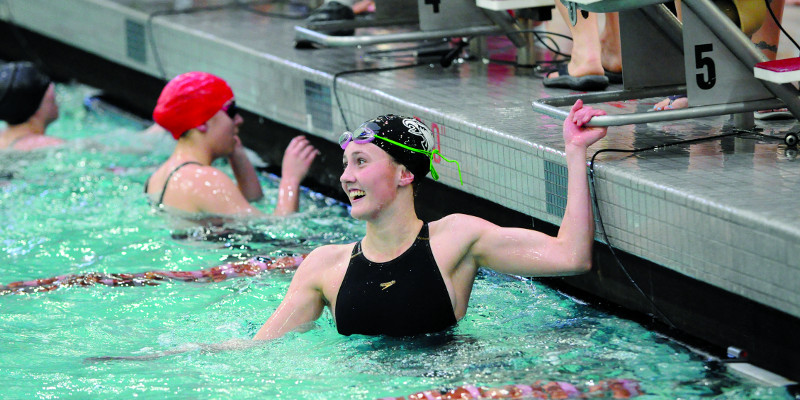
Students involved in educational activities often have many healthier behaviors leading to better physical and mental health.
- Data from the Centers for Disease Control and Prevention's Youth Risk Behavior Surveys (YRBS) administered every 2 years showed that regardless of year, age, gender or race/ethnicity, compared to non-athletes, athletes were more likely to report engaging in vigorous activity and using a condom and less likely to report carrying a weapon. This data showed additional health benefits associated with sports participation that varied by gender and race/ethnicity. These health behaviors included dietary habits, weight loss, sexual activity, Interpersonal violence and suicidality, and substance abuse. Of the 25 health behaviors, White female athletes had the most, 19, associations with positive healthful behaviors. There were fewer associations between sports participation and positive health behaviors for African-American, Hispanic, and the “Other” racial or ethnic category of female athletes, but there were no associations between any racial/ethnic group of female athletes and negative health behaviors. There were some associations for male athletes with negative health behaviors. Minority male athletes showed more associations with healthy behaviors than did minority female athletes. The study’s authors state: “school officials and public health planners can use these findings as a tool to evaluate health costs associated with eliminating sport activities, especially as programs face cuts during economic difficulties.” (Taliaferro et al., 2010).
- Earlier findings from YRBS data also showed multiple positive health benefits associated with sports participation. There were some variations between the specific health behaviors associated with sports participation in these two examinations of YRBS data and both studies showed variations by race and ethnicity. However, both studies showed many positive associations with health behaviors for athletes, only a few negative associations, and the significant role sports participation play in the health of young people. Authors of this earlier study wrote, “sports programs may promote positive health behaviors and deter negative health behaviors by placing a premium on personal health and fitness as prerequisites to optimal sports performance.” (Pate et al., 2000).
- Further corroboration of the health benefits of sports and other school activities comes from 50,168 Minnesota ninth grade public school students voluntarily completing a statewide survey. The data revealed that students involved in sports had significantly higher rates of exercise, milk consumption, and a healthy self-image and had significantly lower odds for emotional distress, suicidal behavior, family substance abuse and physical and sexual victimization than students not involved in sports. Students participating in other activities were significantly more involved in doing homework and significantly less involved with alcohol and marijuana use as well as vandalism. Students involved in both sports and other activities had significantly higher odds ratios than those for “ the other groups for all healthy behaviors and measures of connectedness, and significantly lower [odds ratios] for all but one of the unhealthy behaviors. (Harrison & Narayan, 2003).
- Examination of cross-sectional data from a nationally representative sample of high school students enrolled in public high schools in the United States showed that students participating in organized sports were 25 percent less likely to be current cigarette smokers. (Castrucci et al., 2004)
- A study using the Arizona Youth Survey data showed that Native American students who reported a high level of availability in their school to be involved inextracurricular activities “were less likely to use substances, to be drunk or high at school, to ride/drive when the driver was under the influence, and to sell drugs.” Also the greater their participation in the extracurricular activities at school, the less likely Native American students in this study were to be involved in any of these substance use and drug related behaviors. (Moilanen et al., 2014).
- In a specific examination of high school youth and suicide risk using national data from the CDC’s YRBS, sports participation was significantly associated with reduced risk of feeling hopeless and suicide behaviors. This was true for both male and female athletes while controlling for levels of physical activity. “These findings indicate that involvement in sport confers unique psychosocial benefits that protect adolescents against suicidality… and suggest that mechanisms other than physical activity contribute to the protective association between sport and reduced suicidality. Social support and integration may account for some of the differences found in suicidality between athletes and nonathletes.” (Taliaferro et al., 2008).
- Similar health results have been reported in other parts of the world as well. A study of school-based extracurricular activities (SBEAs) of Chinese students found that those who were engaged in school-based extracurricular activities had a healthier self-concept, were healthier psychologically, showed more emotionally stability, better social adaption and had better career development skills than other students. The authors commented: “Based on the results of our study, we suggest that it might be a good strategy to encourage students to participate in SBEAs to promote positive personality characteristics, good psychological health and adjustment, a healthy self-concept and good career development skills. Schools should create an environment that encourages positive SBEA experiences.” They further stated: “School administrators should recognise that most SBEAs have a positive impact on personality, the self-concept and career development skills in adolescents. In particular, SBEAs provide the social support and promote the interpersonal interaction skills that are important to adolescents’ and young adults’ development.” (Shiah et al., 2013).
- In a study asking students how they would like to become more physically active, about 75% selected doing more physical activity and sports during and after school, and about 50% selected team sports. (Corder et al., 2013). This corresponds with other studies showing that school sports are areas where many students can get more physical activity.
- A research investigation found that the dramatic increase in high school sports participation among girls in the aftermath of the passage of Title IX “was associated with an increase in physical activity and an improvement in weight and body mass among adolescent girls.” The study authors wrote that their “results strongly suggest that Title IX and the increase in athletic opportunities among adolescent females it engendered had a beneficial effect on the health of adolescent girls.” (Kaestner & Xu, 2006).
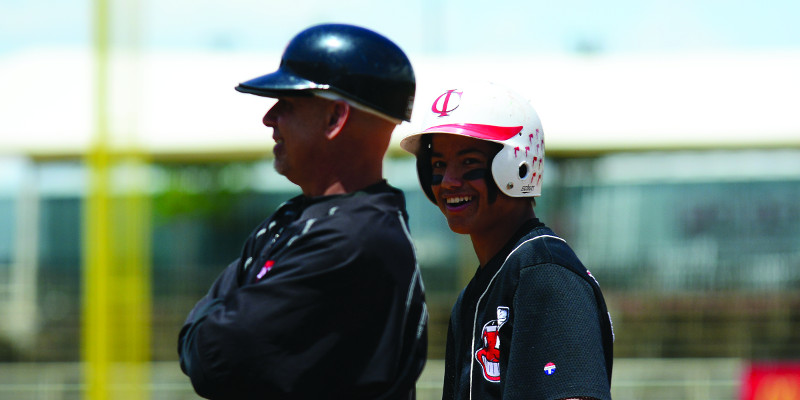
POST HIGH SCHOOL POSITIVE RESULTS
Participation in activity programs yields positive results after high school as well.
- A survey of Alberta’s top corporate CEOs and members of the Legislative Assembly revealed that 78.3 percent had participated in interschool sports. Nearly 80 percent indicated that being involved in school sports significantly, extensively or moderately complemented their career development and/or academic pursuits. This same study, commissioned by the Alberta Schools’ Athletic Association, pointed out that a normal participation rate for students in high school sports is around 30 to 35 percent. (Berrett, 2006).
- Examination of National Education Longitudinal Study (NELS) data showed that participation in school athletics was correlated with many positive educational achievements, behaviors and aspirations in the end of Grade 12 as well as two years later. The positive outcomes included “school grades, coursework selection, homework, educational and occupational aspirations, self-esteem, university applications, subsequent college enrollment, and eventual educational attainment.” These results were consistent across different subgroups for students (e.g., socio-economic status, gender, ethnicity, ability levels, educational aspirations), and were evident when controlling for these factors along with parallel outcome variables in grades 8 and 10. Participation in interscholastic sport “was significantly more beneficial than participation in intramural sport, particularly for more narrowly defined academic outcomes.” (Marsh & Kleitman, 2003).
- A more recent study of the NELS data showed that participation in organized activities during high school is positively associated with post secondary educational attainment, voting, volunteering, and occupational factors 2 and 8 years after high school (while controlling for several demographic, achievement, individual and family factors). More positive associations with outcomes were found for those who participated in organized activities two or more years during high school vs. those who participated only one year. More associations between school-sponsored vs. community-sponsored activities were found 8 years after high school, in particular these were the occupational outcomes of full-time employment and income. One possible explanation put forth by the authors was “that school-sponsored activities, relative to community-sponsored activities, offer developmental supports and opportunities that are more relevant for later occupational success.” (Gardner et al., 2008).
- High school leaders, according to self-report responses about being in some typical high school leadership positions used in the NELS, are more likely to attend college and complete a four-year degree according to another examination of NELS data. School extracurricular activities provide many of the leadership opportunities for high school students. The author of this study states, “Since the availability of leadership positions depends upon the existence of school activities that provide such leadership opportunities, the evidence presented in this article indicates that decisions regarding financial cutbacks for extracurricular activities should not be taken lightly.” (Rouse, 2012).
- Educationally vulnerable youth, characterized by significant personal and social risks and an absence of assets for achieving educational success, involved in extracurricular activities during high school, particularly sports, were more likely to attend college three years post high school than the average overall college attendance of educationally vulnerable youth. Other high school club involvement also contributed to higher college attendance. The authors wrote: “Our results suggest that when vulnerable youth are exposed to a broad distribution of extracurricular activity settings that afford them constructive, developmentally appropriate opportunities (e.g., to befriend healthy peers, develop competencies and skills, exercise some autonomy, develop long-term mentoring relationships, and explore their commitment to education more generally) then their chances of being educationally resilient are enhanced.” (Peck et al., 2008).
- When seeking a job, many students believe highlighting their involvement in extracurricular activities (ECAs) “could be a way to inform employers about soft currencies they possess (e.g. soft skills, teamwork) in addition to hard currencies (e.g. education credentials), but also about their self (e.g. their personality or their values), that is, the full package of personal capital.” They can also see involvement in ECAs as a way to distinguish themselves from other applicants. The authors also noted that these students “believe that their degree is not sufficient to ensure them a job after graduation” and see “the need for distinction.” The authors also noted that employers see ECA participation positively “because they believe ECAs are signals of individuals’ competencies or personality.” (Roulin & Bangerter, 2013).
- Participation in high school sports appears to be not only associated with being more physically active now, but well into the future. In examining the physical activity and health of a sample of male World War II veterans over 50 years later “the single strongest predictor of later-life physical activity was whether he played a varsity sport in high school, and this was also related to fewer self-reported visits to the doctor.” The authors of the study further stated, “This is relevant at a time when funding for many sports programs is being eliminated and play time is being replaced by screen time.” (Dohle & Wansink, 2013).
- A survey of Iowans who graduated 10 to 20 years prior revealed that those who participated in sports during high school experienced a number of positive benefits or behaviors, including “engaging in vigorous physical activity during the week; reporting very good or excellent emotional health; having higher self-esteem; not experiencing long- or short- term depression; feeling satisfied with progress made toward goals in the domains of family, career, and general life; making active use of discretionary time outside the home; volunteering in the community; voting in state and national elections; knowing the names of U.S. Senators from Iowa; assessing news outlets every day; completing a four year degree; having an annual household income greater than $50,000; not having trouble paying bills.” Those who participated in non-sport extracurricular activities during high school also experienced a number of these benefits and behaviors, including engaging in vigorous physical activity in early adulthood more days per week, higher self-esteem, more active use of discretionary time, more volunteering, and completing a four-year degree. (Lutz et al., 2009).
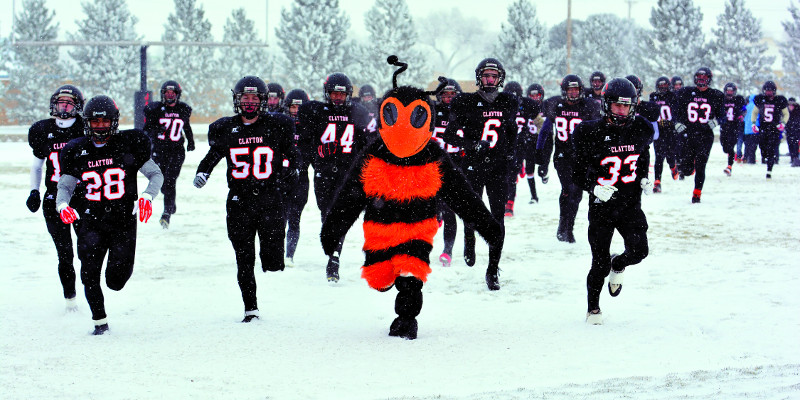
Co-curricular activities teach lessons that lead to better citizens.
- Examination of data from the National Survey of Civic Engagement found that 18- to 25-year-olds who participate in sports activities while in high school were more likely than nonparticipants to be engaged in volunteering, voting, feeling comfortable speaking in public settings, and watching news (especially sport news). (Lopez & Moore, 2006).
- A study looking at data from both the National Education Longitudinal Survey (NELS) and the National Longitudinal Study of Adolescent Health found participation in a number of high school extracurricular activities positively related to early adulthood voting, even after controlling for many self-selection factors, and those not participating in any high school extracurriculars had a lower voting rate. Performing arts participation in high school had one of the biggest effects. The authors noted that many of the extracurricular activities that had an impact, like music, had seemingly no political content or taught specific voting-relevant skills. Instead, their theory for these associations lies mainly in the creation of the habit of participation and engagement as noted in the following statements. “Those who get in the habit of participating and engaging in their high school community tend to continue those behaviors and kind of associations into adulthood. Those that find themselves on the track of uninvolvement and detachment tend to remain detached.” (Thomas & McFarland, 2010).
- Other analyses of NELS data examining the effects of participation in high school extracurricular activities on political engagement among young Black adults showed that participation in individual varsity sports and nonsport extracurricular activities were significantly related to political engagement, as measured by registering to vote and voting in a presidential election.(Braddock et al., 2007).
- Adolescent participation in extracurricular activities was associated with a greater likelihood of college attendance, voting in national and regional elections, and volunteering for community and religious groups according to another examination of NELS data. Consistent extracurricular activity participation in 8th, 10th, and 12th grades showed effects greater than participation in just one of these grades. These results held “after accounting for control and individual, parent, peer, and school process variables.” (Zaff et al., 2003).
- A study of behaviors in a sample World War II veterans found that men who were varsity athletes in high school volunteered time more frequently and donated more to charity than those who were not athletes in high school. In addition, those veterans “who participated in varsity-level high school sports an average of 60 years earlier appeared to demonstrate higher levels of leadership and enjoyed higher-status careers.” (Kniffin et al., 2014).

Not only do individual students benefit from education-based activities, schools and communities benefit when more students are involved in co-curricular activities.
- An examination of information on North Carolina school characteristics, the numbers and types of extracurricular activities available, participation rates, and academic outcomes found that schools that offer more extracurricular activities usually have higher extracurricular participation rates and “opportunities to participate are associated with positive academic outcomes for the school, even when controlling for school resources.”(Stearns & Glennie, 2010).
- Schools that have music programs have significantly higher attendance rates (93.3%) and graduation rates (90.2%) compared to schools that do not have music programs (84.9% and 72.9%, respectively) according to a study done in collaboration with a national and an international music association and with Harris Interactive. (MENC & NAMM, 2006).
- A study of Minnesota Department of Education school fiscal and demographic data combined with self-report information from educators found “that increased allocation of a greater proportion of a school’s total annual expenditure (i.e., increased resources) to student activities and athletics programming is associated with a decreased risk of physical assault [PA] for the educators working in” the school. Compared to other resource allocations, such as regular instruction, special education, and district administration, “associations between increased resource allocations to student activities expenditures and decreased risks of PA were the strongest.” The authors suggest that increased funding provides the opportunity for more students to participate in extracurricular activities, which increases exposure to an adult-supervised environment and consistent with other research, are associated “with prosocial behaviors and other positive educational outcomes.” The authors further suggest that “cuts to sports and extracurricular program budgets may have unintended consequences, such as increased violence in the schools.” (Sage et al., 2010.)
- A study using a nationally representative sample of roughly 1,200 public high schools found “that schools with higher proportions of sports participants report significantly fewer serious crimes (i.e., violent crimes) and suspensions occurring on school grounds.” (Veliz & Shakib, 2012).
As documented here, there are many benefits to participation in education-based co-curricular activities. Among those studies documenting these benefits, several are from countries other than the United States and Canada, such as Australia, China, Turkey, and the United Kingdom. It appears that many of these countries are discovering and studying some of the benefits of education-based co-curricular activities in addition to considering or actually implementing these activities. Other parts of the world also appear to be recognizing the value of sports, performing arts, and other activities in conjunction with academics and within schools. This seems to add further support that schools offering education-based activities can contribute additional benefits to those that can be gained through sports and performing arts activities.
Additionally, although many benefits are cited, several of the studies reviewed for making the Case for High School Activities noted the importance of being intentional about teaching the values, life skills, and other characteristics or behaviors it is hoped young people will obtain from participation in co-curricular activities to assure and strengthen the acquiring of these skills. Although, one or two of the studies above mention student activity participants learning life skills which may not seem to be directly taught, authors of some of the studies caution against assuming too much, particularly around values, life skills, and other positive youth development attributes. More will be accomplished for more students if coaches and other activity leaders are intentional and deliberately, directly, and diligently teach the values, life skills, and positive youth development characteristics they want their student athletes and activity participants to learn and acquire.
Alcohol and cigarette use serve as a notable examples in this regard. Studies are much more consistent in showing that high school students who participate in sports are less likely to smoke cigarettes than those who do not participate in sports. (Castrucci et al., 2004). However, there is less consistency among studies in finding results with alcohol use. In fact, some studies show that students who participate in athletics may be more likely to use alcohol than those who do not participate in athletics. One study finding a positive relationship between sports participation and alcohol use provided a possible rationale suggesting a sports subculture may exist that not only values academic success, but also “partying,” which included alcohol use. The authors noted that such findings “draw attention to the relative importance that coaches could have in preventing a culture of alcohol use from forming among members of their teams.” (Denault et al., 2009).
Schools are unique settings to provide athletic and performing arts activities, and education-based activities can maximize the benefits that can be gained through sports and performing arts activities. Since students spend much of their time at school, education-based activities may offer easier access to athletic and performing arts activities. This may be particularly true for students who have lesser resources to access, and afford to participate in, such activities. Education-based activities promote more positive attitudes toward school and increase school engagement, which can increase academic motivation and performance. Co-curricular activities are generally designed to support and work in concert with the academic goals of the schools. Education-based activities staff are trained to not only to teach students athletic or performing arts skills, but skills that help students do well in school and in life. Schools are centers of learning where teaching and learning are intentionally designed and implemented. If communities and societies want to be intentional about what students learn, make the most of athletic and performing arts activity participation as well as help promote academic learning in school, they need education-based co-curricular activities.
